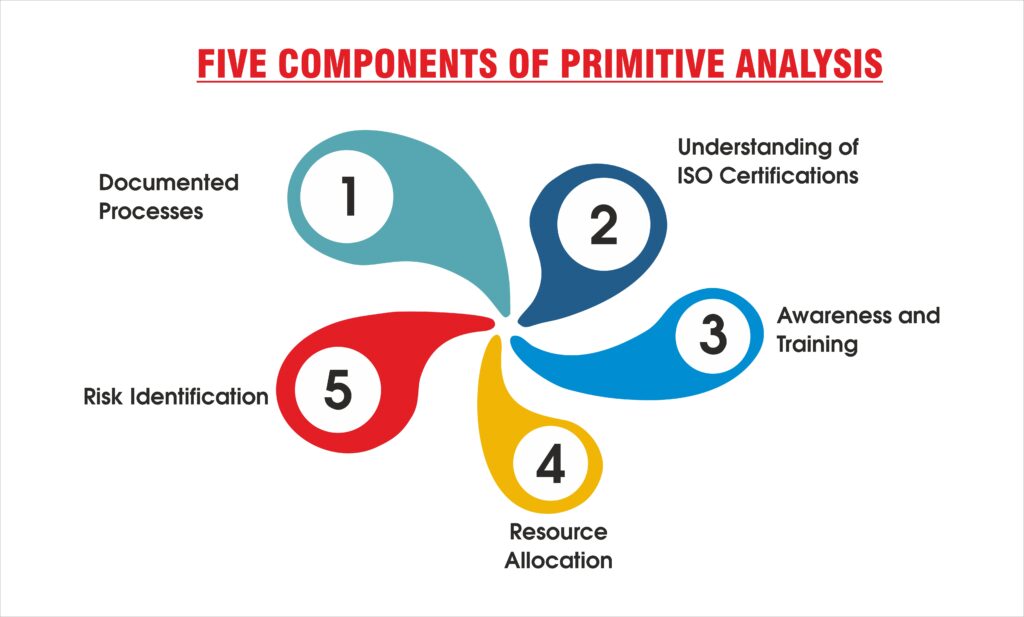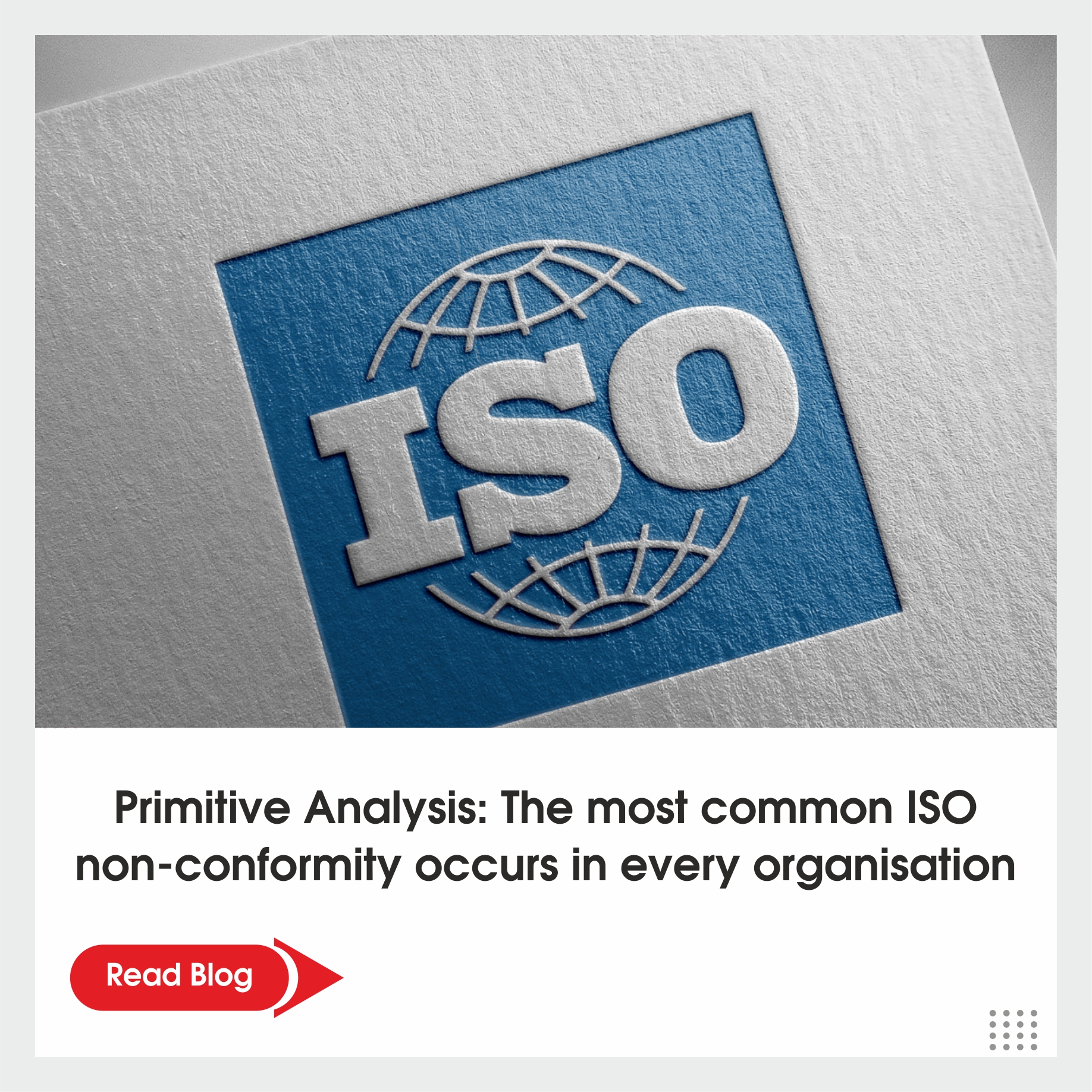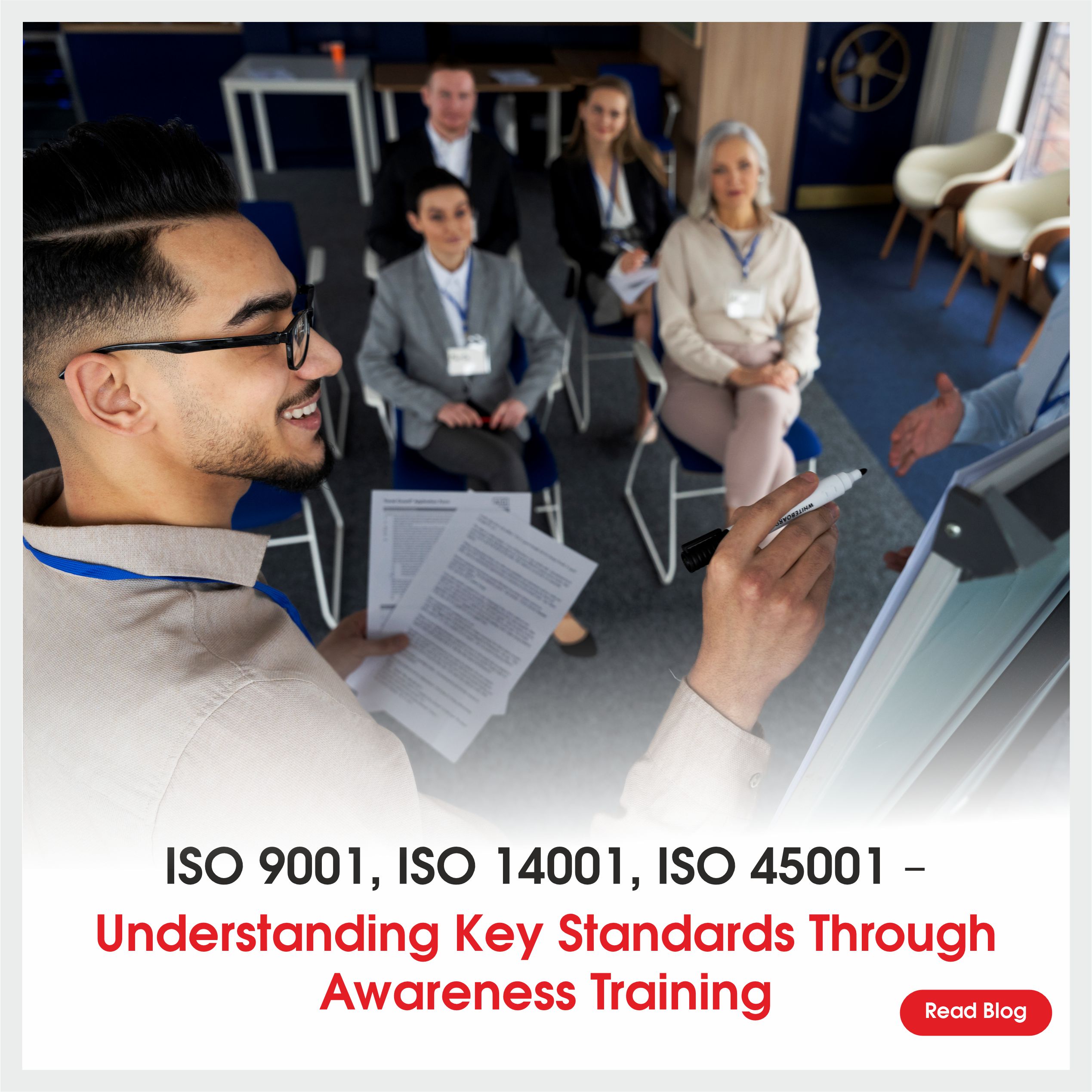Primitive Analysis is an initial examination or assessment of an organisation’s processes and practices to identify fundamental issues and potential non-conformities with ISO standards. However, an organisation must conduct it at the initial stages of pursuing ISO certification to outline the foundational challenges.
“Primitive” in ISO Certification refers to the essential aspects of an organisation’s operations. Moreover, it involves a comprehensive examination to monitor the five key components of primitive analysis to maintain compliance with ISO standard requirements. These five components are as follows:
Five Components of Primitive Analysis ⮯

The dream of every organisation is to achieve defined quality requirements. However, quality is an impeccable component in the complex web of organisational procedures. The International Organisation for Standardisation (ISO) certification provides international and national best practices for many people and organisations to attain intended outcomes. In their quest for excellence, organisations often find themselves entangled in the labyrinth of non-conformities. Of these, the most common ISO non-conformity stands out as a persistent issue that is straightforward but persistent.
Common Non-Conformities that can occur during Primitive Analysis ⮯
Organisations can attain a more seamless path to ISO certification depending on recognising and resolving the problems early in the certification procedure. Organisations can identify non-conformities during the Primitive Analysis due to non-compliance with ISO standards. The following are possible non-conformities:
- Incomplete Documentation
An organisation must maintain proper documentation of processes as missing, outdated, or incomplete documentation can lead to an ISO non-conformity.
- Lack of Understanding of ISO Requirements
Organisations must gain sufficient knowledge and understanding of the specific ISO standards. However, a misalignment between organisational processes and ISO requirements can cause non-compliance.
- Inadequate Training and Awareness Programs
Adequate training and awareness programs help employees gain a deeper understanding of ISO standards and requirements. Moreover, a lack of training programs to educate employees on ISO standards can result in ISO non-compliance.
- Vague Resource Allocation
An organisation must allocate resources adequately, including human and technological resources, for implementing and maintaining ISO standards. However, inadequate resource allocation can produce unintended outcomes in the organisation.
- Failure to Identify and Manage Risks
Risk identification and management is an essential component of ISO Certification. However, incomplete identification and management of risks could cause ISO non-compliance.
Strategies an organisation can implement to prevent non-conformities ⮯
An organisation must resolve ISO non-conformities by adopting a comprehensive strategy. Organisations must take proactive measures to manage documentation clutter and strengthen their procedures against the potential risk of non-compliance. Organisations can take the following measures to manage ISO non-conformity:
- Regular Audits and Reviews: An organisation must conduct regular internal audits to monitor and review the documentation system. Moreover, conducting regular audits and reviews helps organisations identify disparities and shortcomings in the ISO Certification process.
- Training and Awareness Programmes: Organisations should organise extensive training programs to educate staff members. Educating employees about the possible repercussions of nonconformities can establish accountability and responsibility within the organisation.
- Adequate Documentation: Organisations must maintain accurate documentation to maintain compliance with the ISO standards.
- Continuous Improvement: ISO Certification encourages an organisation to adopt a framework for continuous improvement. An organisation’s ability to take corrective actions to manage ISO non-conformities helps it achieve sustainable growth.
Conclusion ✅
Organisations must carefully and strategically negotiate the complex web of standards to become ISO-certified. The most common nonconformity stems from a disorganised documentation system and is a warning sign for organisations to strengthen their foundations.




